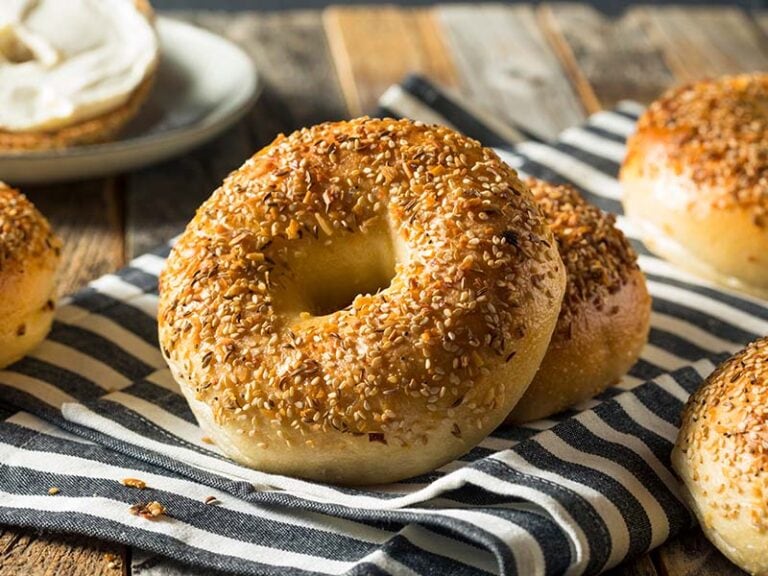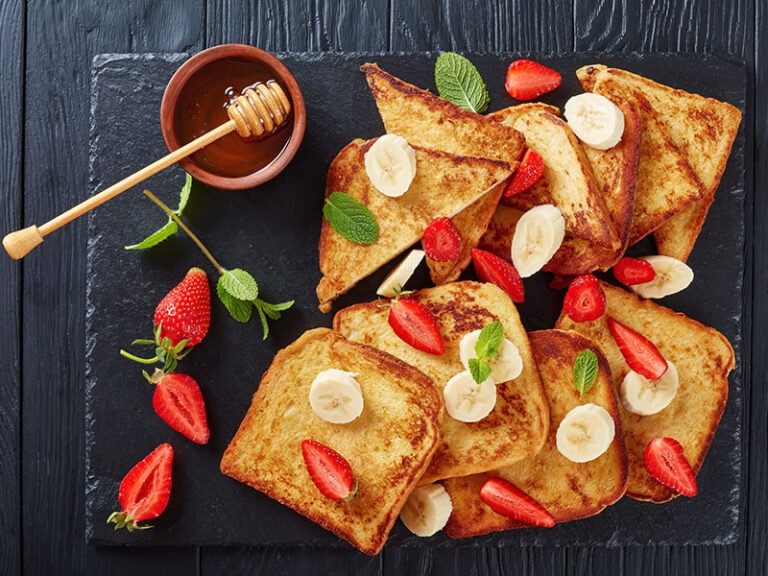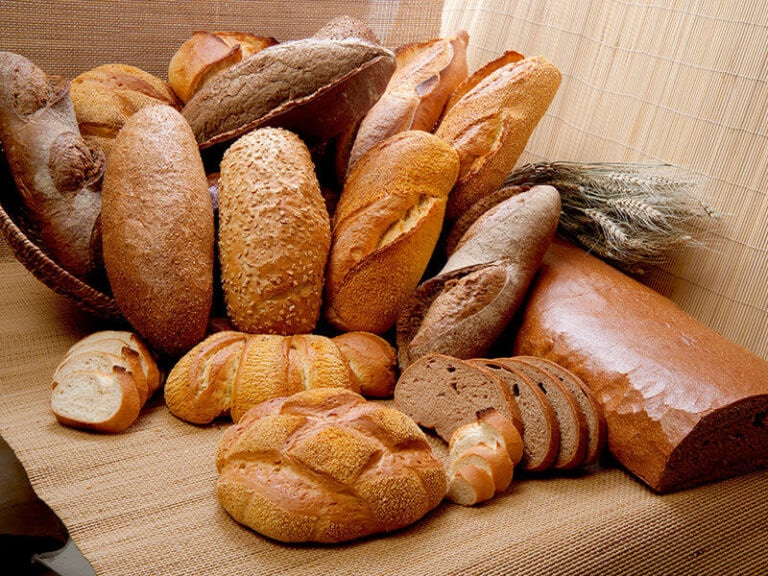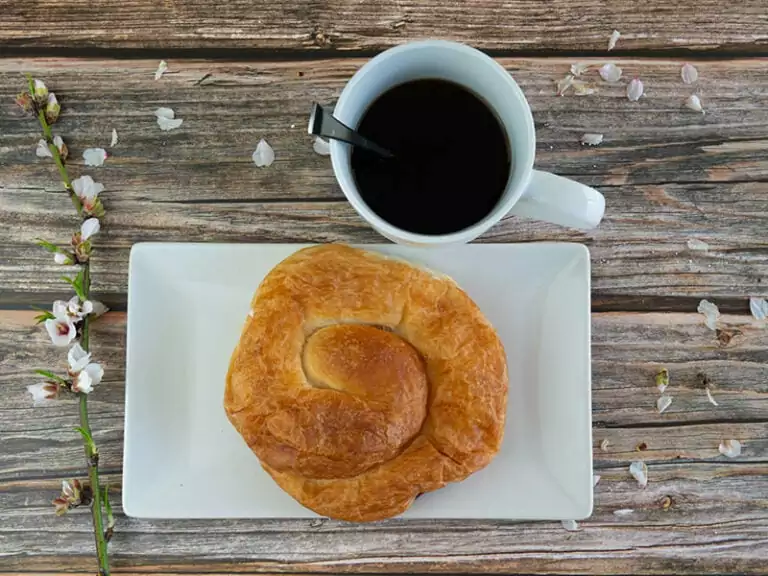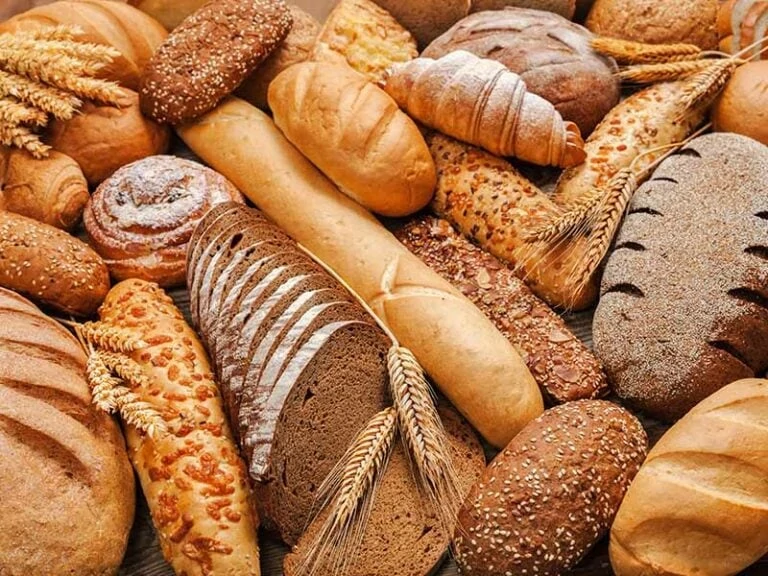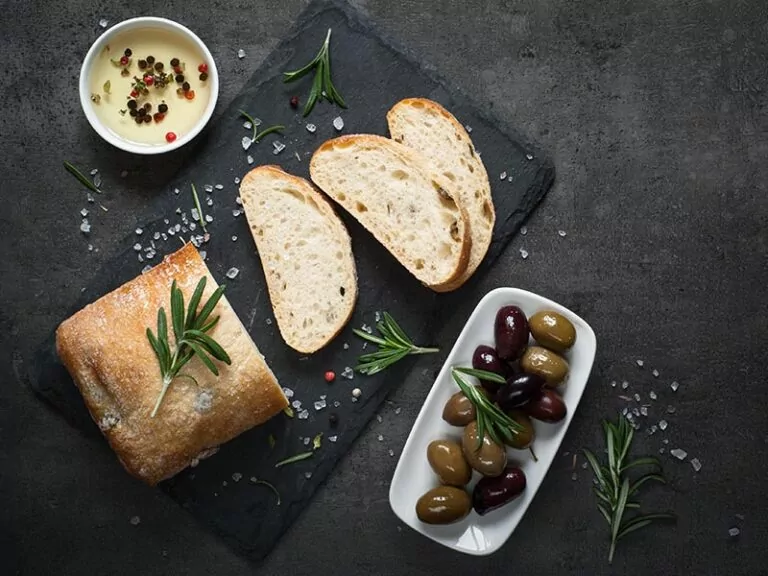What is bread flour? If you’re new to baking, bread flour can be a new term that you need to learn more about. This type of flour is concealed in delicious, crusty loaves of bread or many other familiar baked goods without your knowing.
In this post, I’ll explain how to differentiate bread flour from other types of flour, how to use it, and what ingredients you can substitute for. Follow me, and I will tell you all you need to know about bread flour.
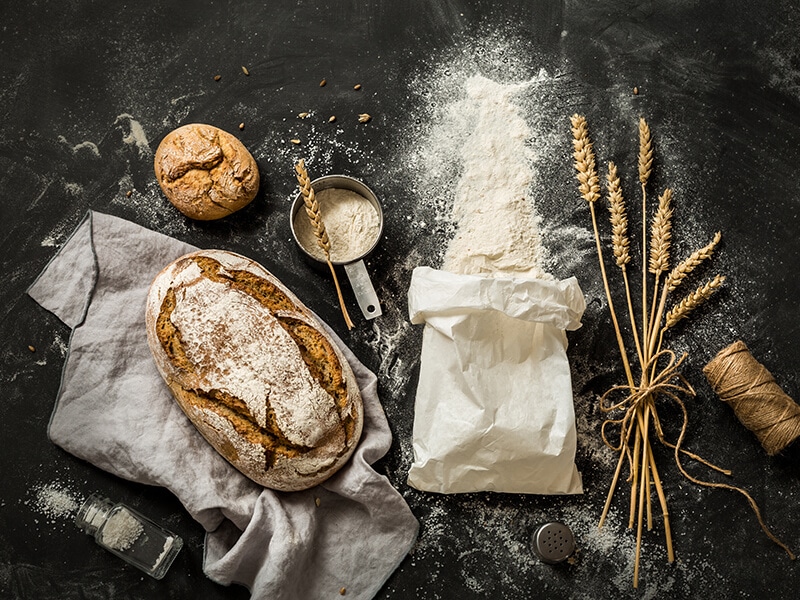
What Is Bread Flour?
When first learning to bake, many people have trouble distinguishing the different types of flour. They might think using them interchangeably is fine, either. However, each kind of cake requires a particular flour. I will introduce you to the essential for baking bread – bread flour.
The Key Ingredient Of Bread Flour: Protein
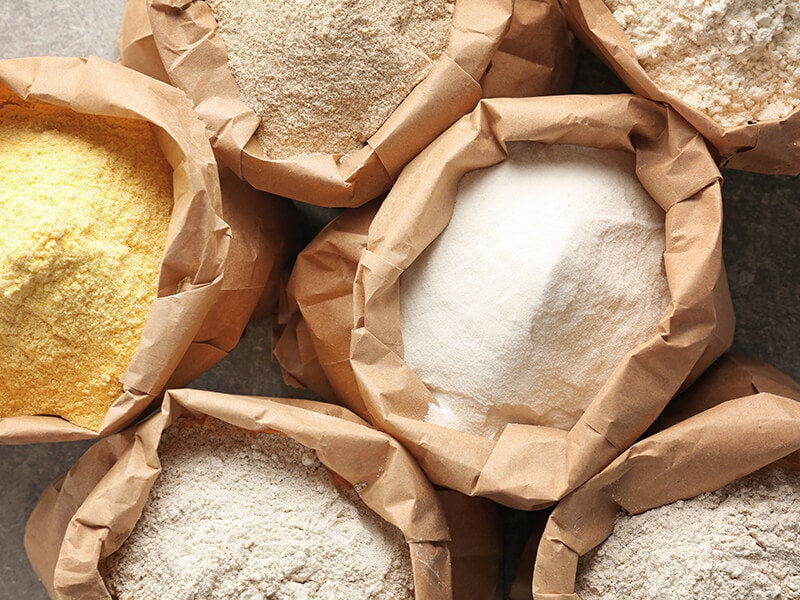
Bread flour is finely milled from hard red spring wheat grains. Therefore, it has high protein content. The protein level of bread flour usually ranges from 12% to 14%, higher than any other type of flour.
Depending on the brands, some bread flour types even have a protein content of 15% or 16%. A lower protein value results in a fluffy and soft cake, whereas a higher protein helps the bread to have a more stiff texture. Thus, protein value is critical in flour classification.
Bread flour contains two types of protein: gluten and gliadin. The former is essential in baking bread. It imparts a unique flavor to the bread and contributes to its elastic, chewy, and airy texture.
Bread flour contains the highest protein when compared to any flour. This implies that when you use bread flour to bake, the resulting product will have a firm texture and a fixed shape.
This property of bread flour makes it perfect for donuts, bread loaves, or any other baked goods that should rise high and are not likely to collapse.
The more gluten, the greater the protein percent in the flour. It helps the bread have a firm, stretchy texture instead of soft, fluffy, delicate cakes (1).
Do you know how the protein value affects the texture of bread? This video explains everything.
Types Of Bread Flour
If you just start baking, you might realize that there is more than one variety of bread flour. Specifically, there are four standard types: whole wheat bread flour, white bread flour, bleached bread flour, and unbleached bread flour.
White bread flour is often manufactured from hard spring wheat. However, the primary element in whole wheat flour is hard red wheat. Because of this difference, whole wheat bread flour has slightly more protein and nutrients than other bread flour.
Unbleached and bleached bread flour are fundamentally the same thing. However, unbleached bread flour has a yellow tint in color and a higher nutritious value than bleached ones.
Because of the bleaching process, bread flour loses most of its nutrients, such as vitamins or fiber, leaving primarily protein and carbohydrates.
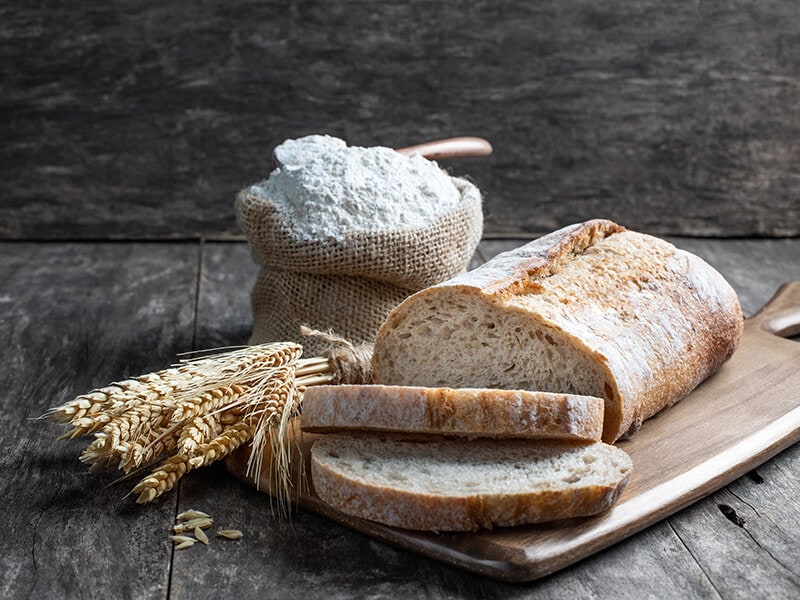
Health Concerns About Bread Flour
Bread flour, in general, has no harmful chemicals to the body. In general, it is incredibly healthy. Proteins, vitamins, thiamine, folate, selenium, and starch are all found in bread flour.
It also has a lot of calories since carbohydrate is its main element. As a result, eating bread will make you feel fuller faster than eating other foods.
However, everything has limits, so don’t absorb too much bread flour. Excessive carbohydrate consumption may quickly cause several health issues, such as type 2 diabetes, cardiovascular disease, digestive system disease, and an especially fast weight gain.
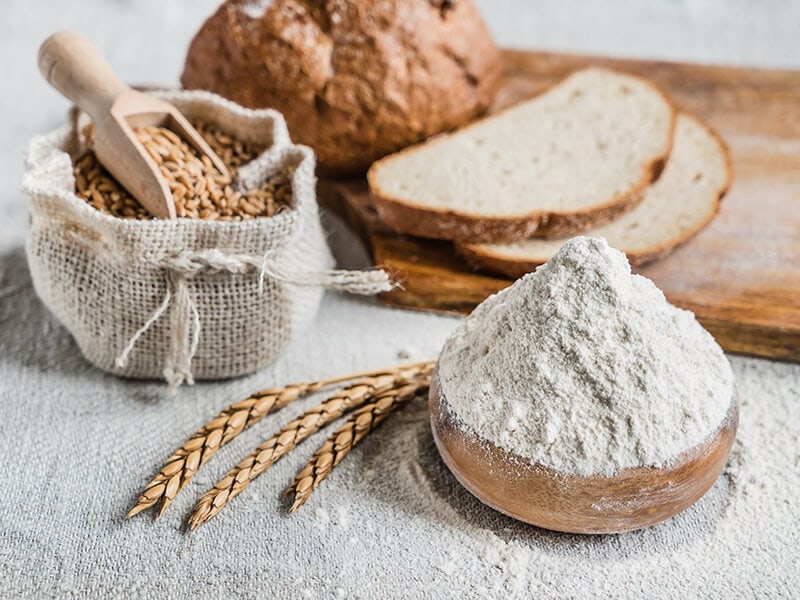
What Can You Use Bread Flour For?
It is not difficult to assume from the name of flour that its primary function is to bake bread. Your assumption is not wrong, though. Bread flour is produced to make yeast bread, sourdough bread, or white bread.
In addition, many bakers use bread flour to make buns, dinner rolls, bagels, pretzels, pizza crusts, cookies, and baguettes. Some recipes even need bread flour for making dumplings. Too cool, isn’t it?
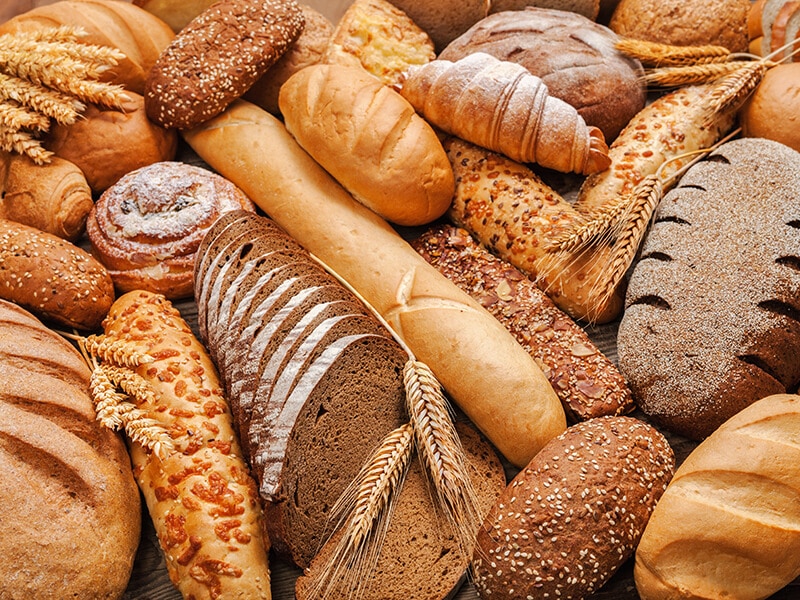
Most Popular Bread Flour Brands
Do you know which brand of bread flour is the best? Let’s check out these fantastic products from well-known flour brands listed below!
Bob’s Red Mill
Artisan Unbleached Bread Flour is a high-protein flour produced from the best wheat in America. It is ideal for many recipes, such as sourdough bread, sandwich loaves, pizza dough, pretzels, baguettes, and bagels.
Because this product is an unbleached type, it would be a great choice for health-conscious bakers. Unlike bleached flour, this product still contains plenty of fiber. So, the bread is still highly digestible.
King Arthur
This brand has been a reliable source of bread flour among bakers in America since 1790. King Arthur Unbleached Bread Flour is an excellent product of it.
Although it is also unbleached bread flour, it has a considerably greater protein level (12.7%) than many other brands.
It is a wonderful choice for making everything from tasty sandwiches to perfect baguettes. With this flour, you can even use a bread machine to make bread. That will help a lot in your baking process.
Gold Medal
With over 135 years of baking experience, there is no doubt that the Gold Medal brand produces high-quality products. Gold Medal Bread Flour has high protein content and efficient liquid absorption. It allows the bread to maintain impressive firmness, elasticity, and softness.
White Lily
White Lily, which was founded in 1883, is a trusted brand for many cooks and bakers. This is the greatest brand of flour and baking in the southern United States.
White Lily’s Unbleached Flour retains wheat’s essential nutrients. It is perfect for yeast bread rolls, pizza crusts, and other baked products requiring dough kneading.
Bread Flour Vs. All-Purpose Flour: Key Differences
Bread and all-purpose flour have a high protein ratio that is excellent for baking bread. Although these two types of flour bear different names, many people often get them mixed up.
Those with little cooking experience may quickly mistake them if they don’t research properly. Bread flour is usually manufactured from hard spring wheat, whereas all-purpose flour is often milled from hard winter wheat.
Bread flour has a rougher texture than all-purpose flour. It also has an off-white hue. On the other hand, all-purpose flour is finely milled and has a noticeable pure white tint.
The protein content is the key factor in differentiating them. All-purpose flour has a protein value of 10% to 12%, which is lower than bread flour’s protein content of 12% to 14%. Finally, all-purpose flour is also more widely available than bread flour.
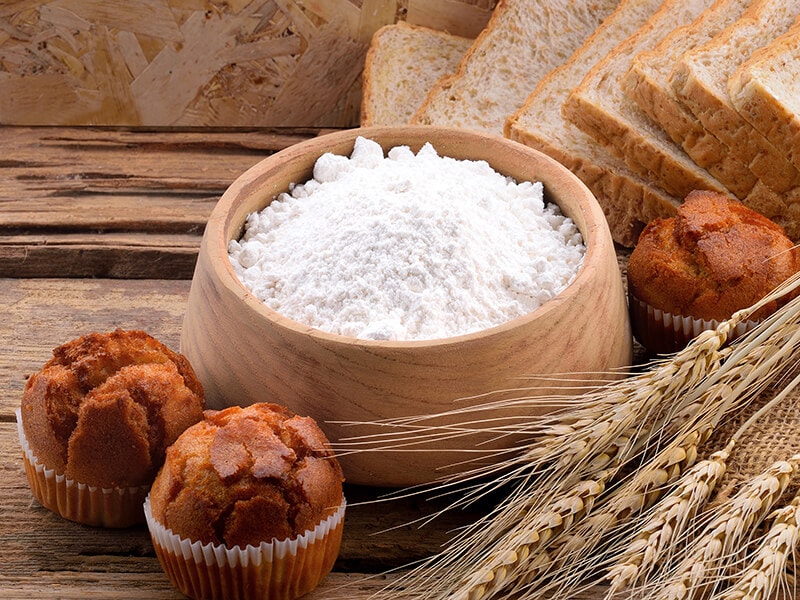
Can You Substitute All-Purpose Flour For Bread Flour?
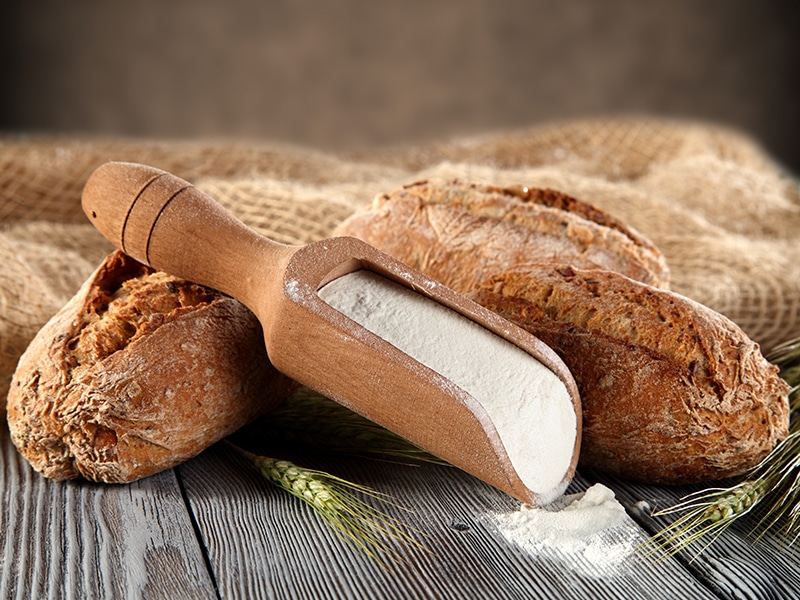
As previously stated, bread and all-purpose flour are both higher in protein than other flour, making them ideal for bread recipes. Try all-purpose flour if you want to make yummy buns at home without using bread flour. You could be amazed by the fantastic outcomes.
On a side note, the higher the gluten level, the better the flour can absorb liquids. Since bread flour has more gluten than all-purpose flour, it will absorb moisture more effectively.
Therefore, the bread will be firmer than other cakes and rise upward. When using all-purpose flour instead of bread flour, you should reduce the amount of milk or water in the recipe proportionally to prevent the bread from being over-moisturized.
However, this is just a temporary solution, and you should prioritize what the recipe requires. Each type of flour is created to satisfy the requirements of particular baked goodies. If your recipe labels a specific flour, you should follow the instructions and use that flour.
How To Make Bread Flour At Home
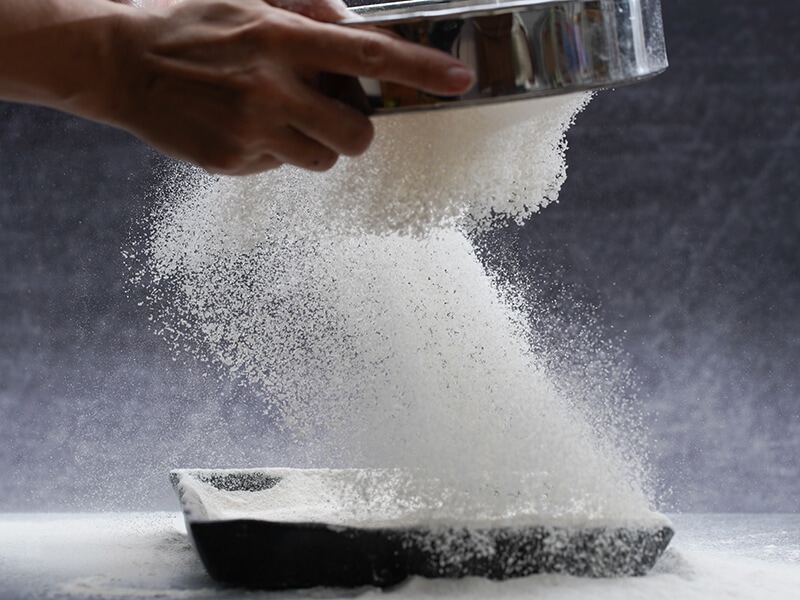
When you’re learning to bake, you don’t want to spend too much money on expensive bread flour. Or when you want to bake some buns but don’t have bread flour in your pantry, you may easily make your bread flour at home.
Follow the instructions below, and you will get a cup of homemade bread flour on hand.
Step-by-step instructions:
- In a clean, dry bowl, put one cup of all-purpose flour.
- Next, add one tablespoon of wheat gluten to the bowl.
- Mix until the flour is thoroughly blended.
- To strain the flour, use a sieve.
Learn how to make your own bread flour at home with this detailed guide.
How To Use Bread Flour In Cooking
To bake excellent bread, you must be cautious about measuring bread flour, mixing ingredients, and incubation times.
You should measure bread flour by grams rather than cups, which will give you a more precise quantity that the recipe calls for. A cup of bread flour typically weighs around 120 to 140 grams. So measuring by a kitchen scale would be more appropriate.
Refrain from overmixing the mixture; mix it just right according to the recipe for each cake. The incubation time is critical in baking bread. The dough should be incubated for a particular time, neither too quickly nor too slowly.
Many beginner bakers make mistakes when they assume that the longer the dough, the better it is. Prolonged incubation produces yeast, which might affect the bread’s smell.
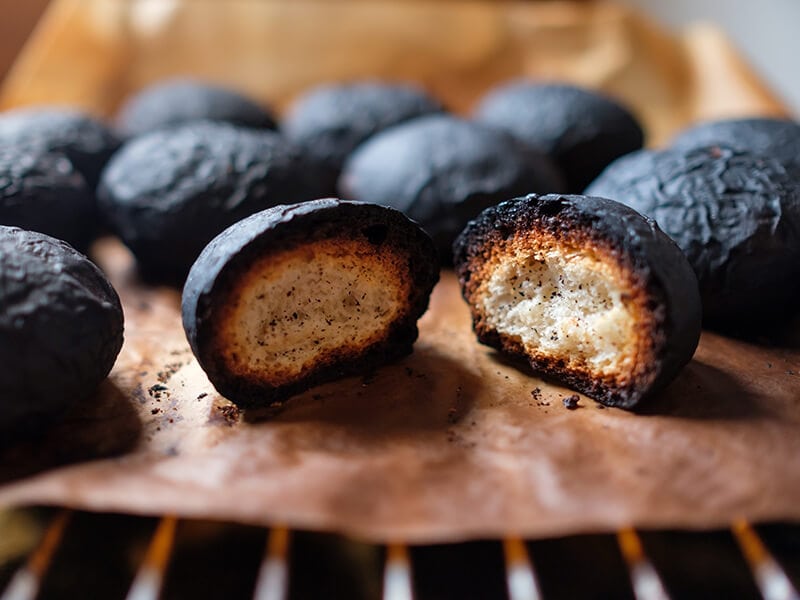
Buying & Storage Tips For Bread Flour
Using ingredients that do not meet your requirements will result in unsatisfactory. Improper storage may quickly ruin it. Check out the following buying and storage advice right now!
Sale Location
Bread flour, fortunately, is widely available. This flour is easily accessible at any grocery or baking shop. If the supermarkets in your area don’t have this flour, you might even purchase it online and receive the product just as you want.
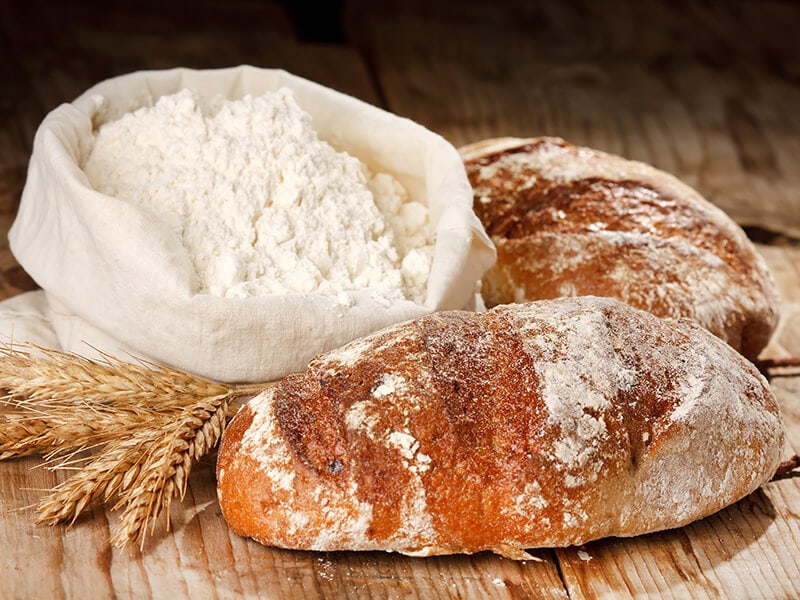
How To Choose The Suitable Bread Flour For Your Recipes
You must carefully analyze the recipe while choosing the appropriate bread flour. If you want a gorgeous white tint in your bread crumb, use white bread flour or bleached bread flour. If you value nutrition above appearance, whole wheat flour or unbleached bread flour should be your first choice.
How To Store Bread Flour Properly
Like all other ingredients and foods, you must store bread flour well. It allows you to use it appropriately, ensuring the outcomes of your bread or baked goods. You may want to follow the tips below to keep the flour as fresh as possible.
First, if you do not use up the flour after opening the bag, keep it in a dry plastic or glass jar with a lid. In case you don’t have a container or jar, just keep the flour in the bag and seal the top firmly (3).
Besides that, you should also avoid putting the flour in places with too much humidity or heat. It affects the nutrients and flour’s quality, spoiling the flour.
Moreover, the flour package generally has an expiration date of 6 to 8 months. This timeframe will be shorter after the bag is opened.
Therefore, before using the flour for the next batch of bread, always check its condition. It helps to maintain the best quality while also being safe for health.
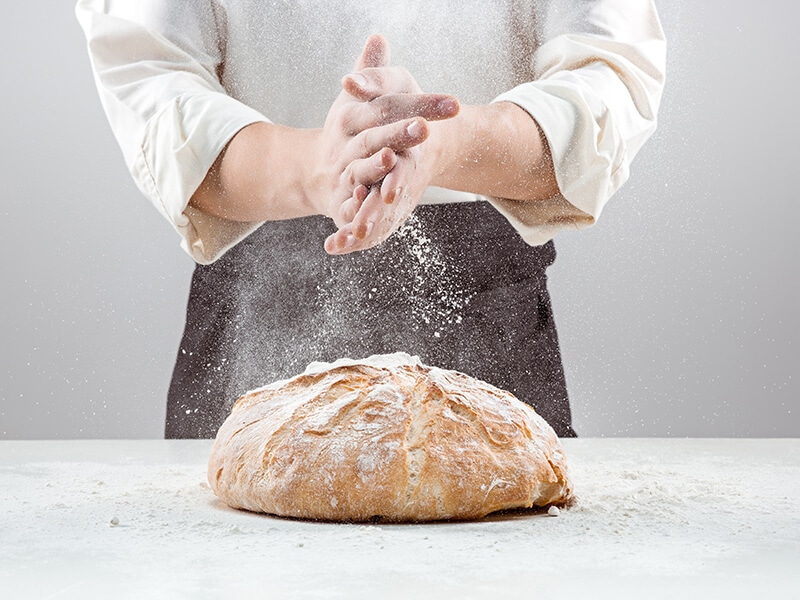
Bread Flour Recipes To Try At Home!
Below is a list of fantastic bread recipes that are incredibly simple to bake with ingredients you probably already have. Let’s give them a try!
Sourdough Discard Breadstick
Breadsticks have long been a popular option for every meal in many households worldwide. With a basic recipe, it is simple to bake and perfect for any occasion.
The only tip is to slow-bake these delightful breadsticks at low temperatures. The perfectly flaky and crunchy breadsticks will keep your kids coming for more!
Let’s jump into this recipe and figure out how to bake delectable breadsticks!
Simple Loaf Of Bread
What could be better than a warm loaf of bread? This recipe is a perfect start for you as it only requires five common ingredients and easy methods. Why not start making the best breakfast for yourself and enjoy the greatest morning?
Do you love bread? Why not become a baker and make a delightful loaf for yourself?
Morning Buns
Every morning when you wake up, have a delicious bun that will awaken your taste. This recipe shows you how to create tasty buns using simple ingredients you can get anywhere.
These perfect buns, flavored with sugar, butter, and cinnamon, and glazed with sanding sugar, will delight the crowd!
FAQs
I hope the essential information about bread flour above is helpful to you. Yet, if you still have any concerns related to the topic, these related questions might help you out!
Ready To Bake Some Crusty Bread?
After reading this post, you’re perhaps unsure about making bread. Or, you could research further information, but there will be no perfect timing, so just go ahead and give it a try, my friend!
Don’t be afraid to put some work in and bake your first batch of bread. You can comment below and let me know how it turns out. Besides, if you found this post helpful, please like and share it with others!
References
- Hughes, J., Vaiciurgis, V. and Grafenauer, S. (2020) Flour for Home Baking: A cross-sectional analysis of supermarket products emphasising the whole grain opportunity, Nutrients. U.S. National Library of Medicine.
- Type 2 diabetes (2021) Centers for Disease Control and Prevention. Centers for Disease Control and Prevention.
- Amit (2020) How to properly store your flour – short and long term, The Bread Guide.

